Beetles are insects from the Coleoptera order. There are about 400,000 described species, making it one of the largest orders of insects. Their front pair of wings are hardened into wing cases, distinguishing them from other insects. The oldest known beetle, Coleopsis, is 295million years old, it is sadly now extinct.
Beetles make up a huge part of the world’s biodiversity, and as such their conservation is very important. Loss of habitat and biodiversity around the world impacts heavily on beetles. Beetles can have very specific habitats and long life cycles that can make them vulnerable. Because of this some species are highly threatened while others are feared already extinct. The presence of beetles can indicate how healthy the planet is, and we should encourage a love for beetles, and protecting their habitats can help us to protect the world from ecological disaster.
Bugs are insects from the Hemiptera order. They are true bugs, and share a common arrangement of piercing-sucking mouthparts. They are called the true bugs, because we often refer to other creepy crawlies collectively as bugs when they aren’t, for example the ladybug is actually a beetle! There are about 80,000 species of hemiptera. Many bugs are pests, to both humans and plants, however the climate catastrophe that humans have created has destroyed habitats and affected the global migrations of hempiterans. For example, rising global temperatures are correlated with the severity of potato leafhopper infestation, so increased warming may worsen infestations in future.
Here I have drawn bugs from Pentatomoidea (a super family in the Heteroptera suborder of the Hemiptera order) which includes stink bugs and shield bugs, jewel bugs, giant shield bugs, and burrower bugs.
Illustrated using Molotow acrylic paint markers.
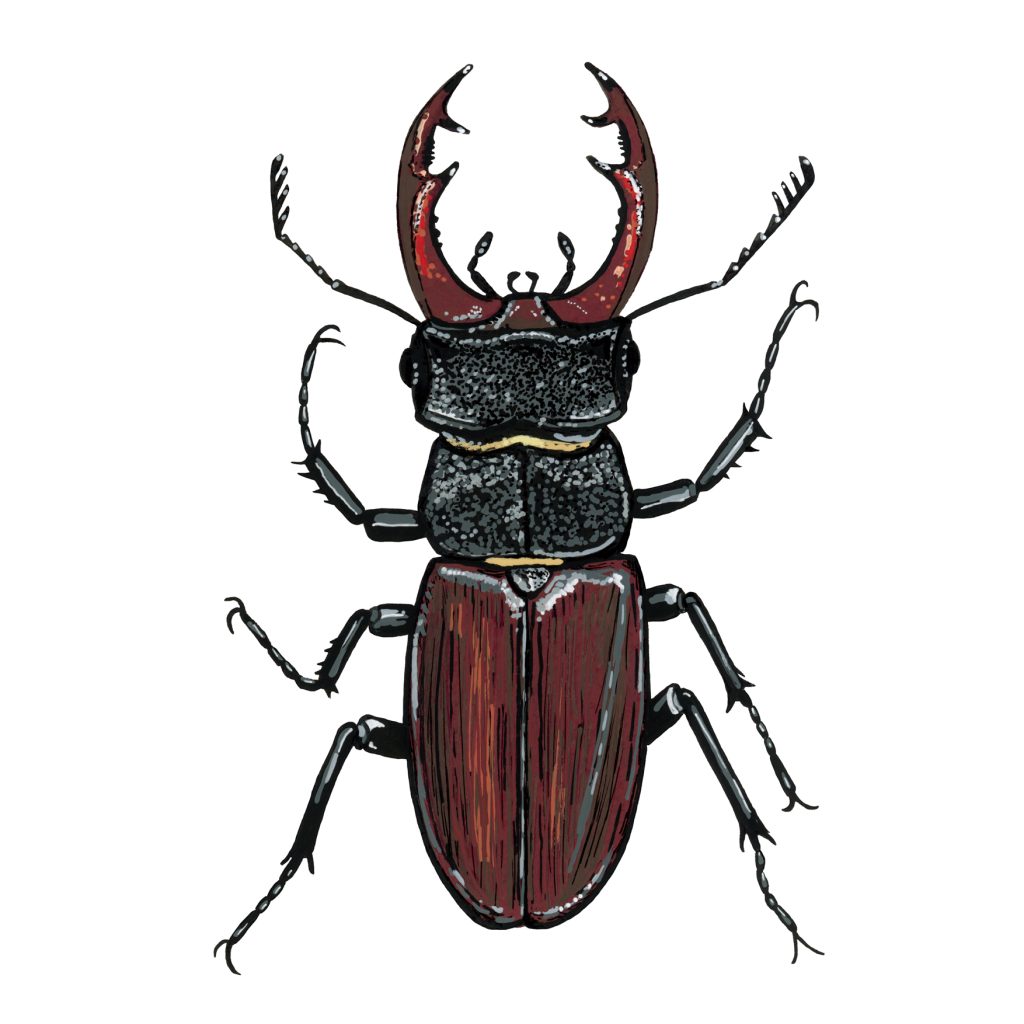
Lucanus cervus
The stag beetle can grow up to 35-75mm long for males, and females 30-50mm long. They can be found across Europe and in the UK. Cervus is latin for deer, in reference to the antler like mandibles which the males use to wrestle with other males, similar to stags. They were first classified in 1804 by Pierre André Latreille
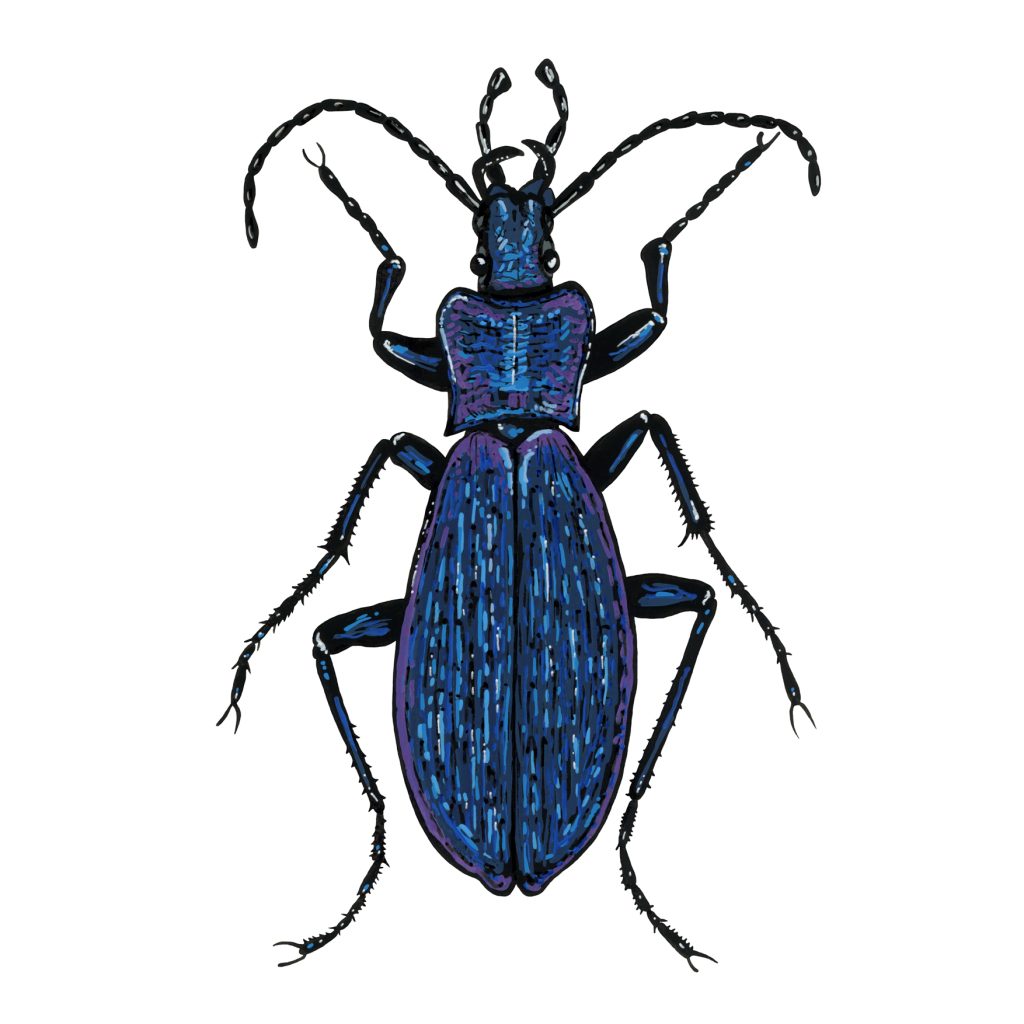
Carabus intricatus
The blue ground beetle, can grow between 24–35 mm in length, they have a roughly surfaced metallic elytra. They are nocturnal carnivores, with a taste for slugs. They are an endangered species in the UK, and near threatened across Central Europe. They were first classified in 1761 by Carl Linnaeus.
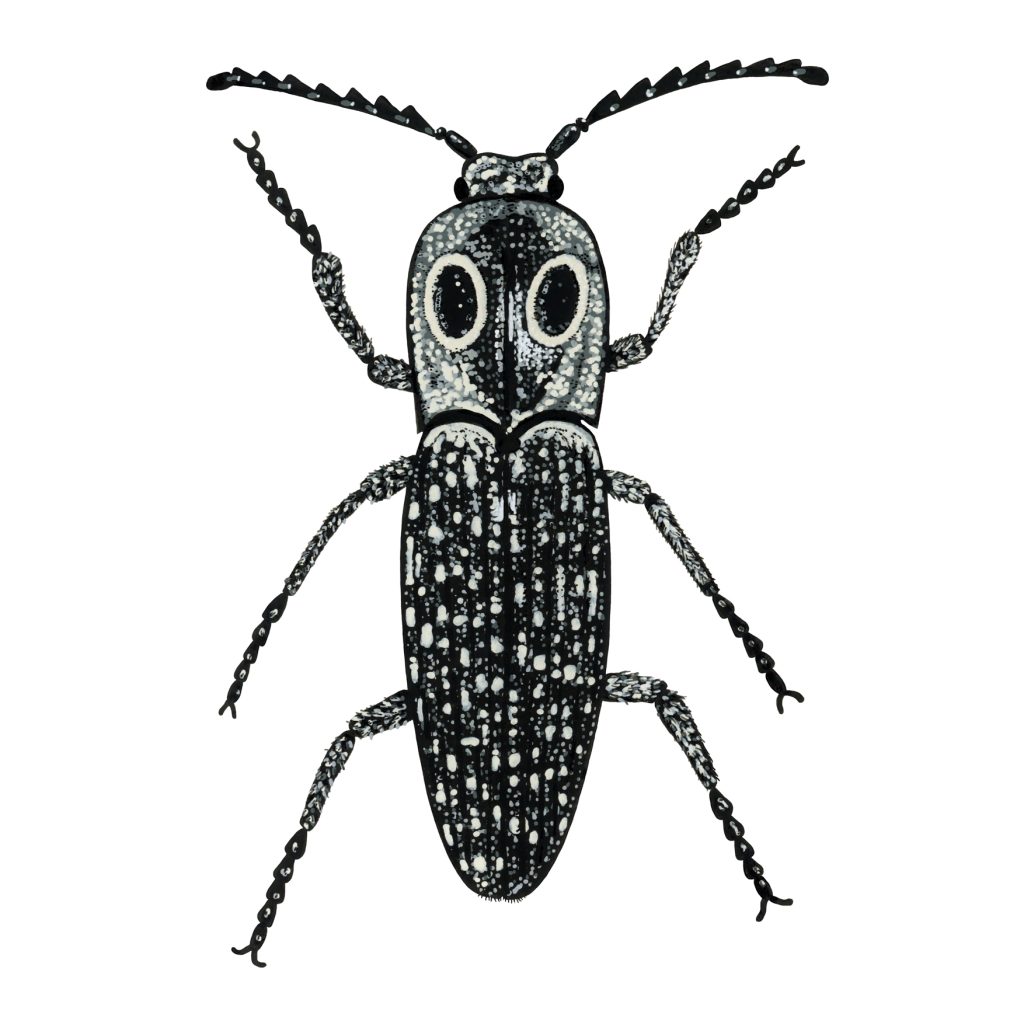
Alaus oculatus
The eastern eyed click beetle can grow to a length of 25-45mm. They have eye spots on their pronotum as a form of mimicry to confuse or frighten potential predators. Like all click beetles they are able to catapult themselves out of danger by releasing energy stored in a click mechanism. They can be found in Central and Northern America. They were first classified in 1758 by Carl Linnaeus.
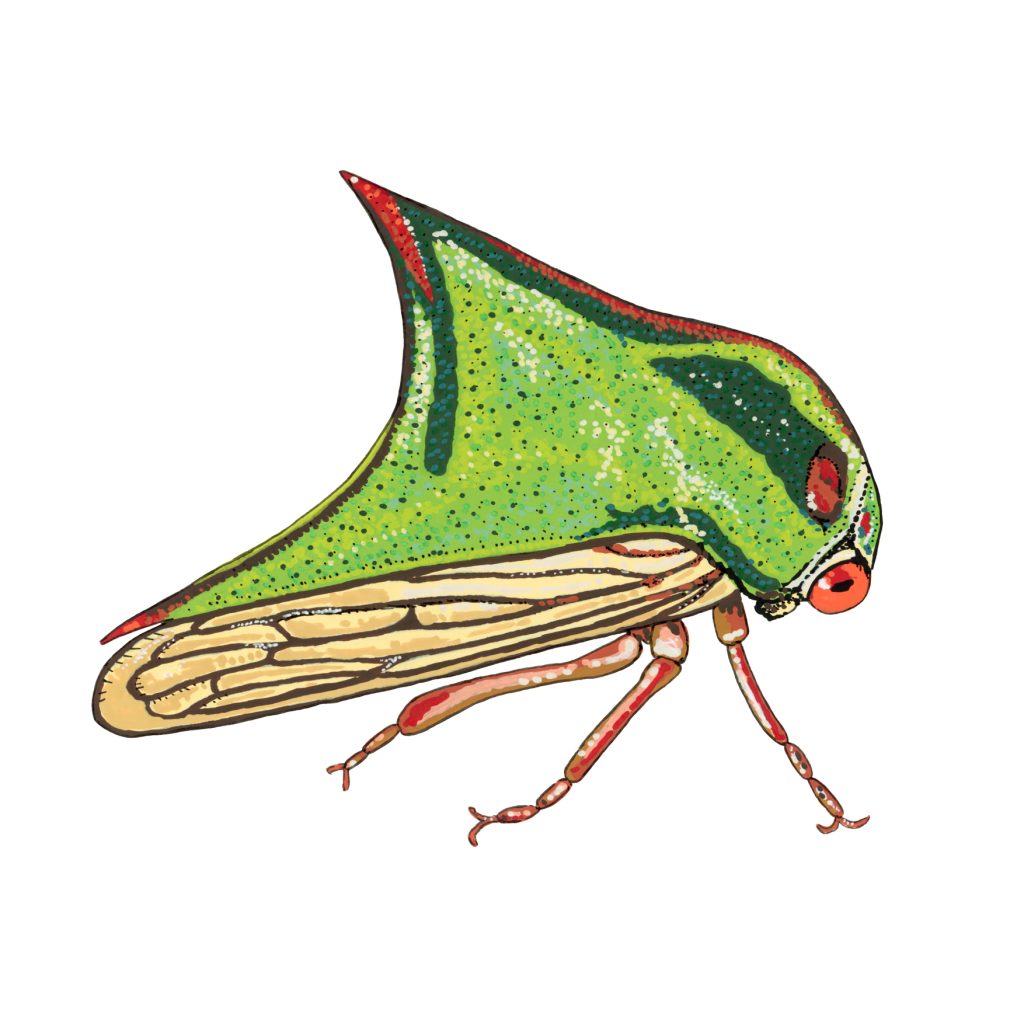
Umbonia crassicornis
This thorn bug is 10mm in length. Like other treehoppers they have a large pronotum, protruding upwards resembling a plant thorn, this discourages birds and other predators from eating it, as they are well camouflaged. They can be found in the tropical regions of the Americas. They were first classified in 1843 by Charles Jean-Baptiste Amyot and Jean Guillaume Audinet-Serville.
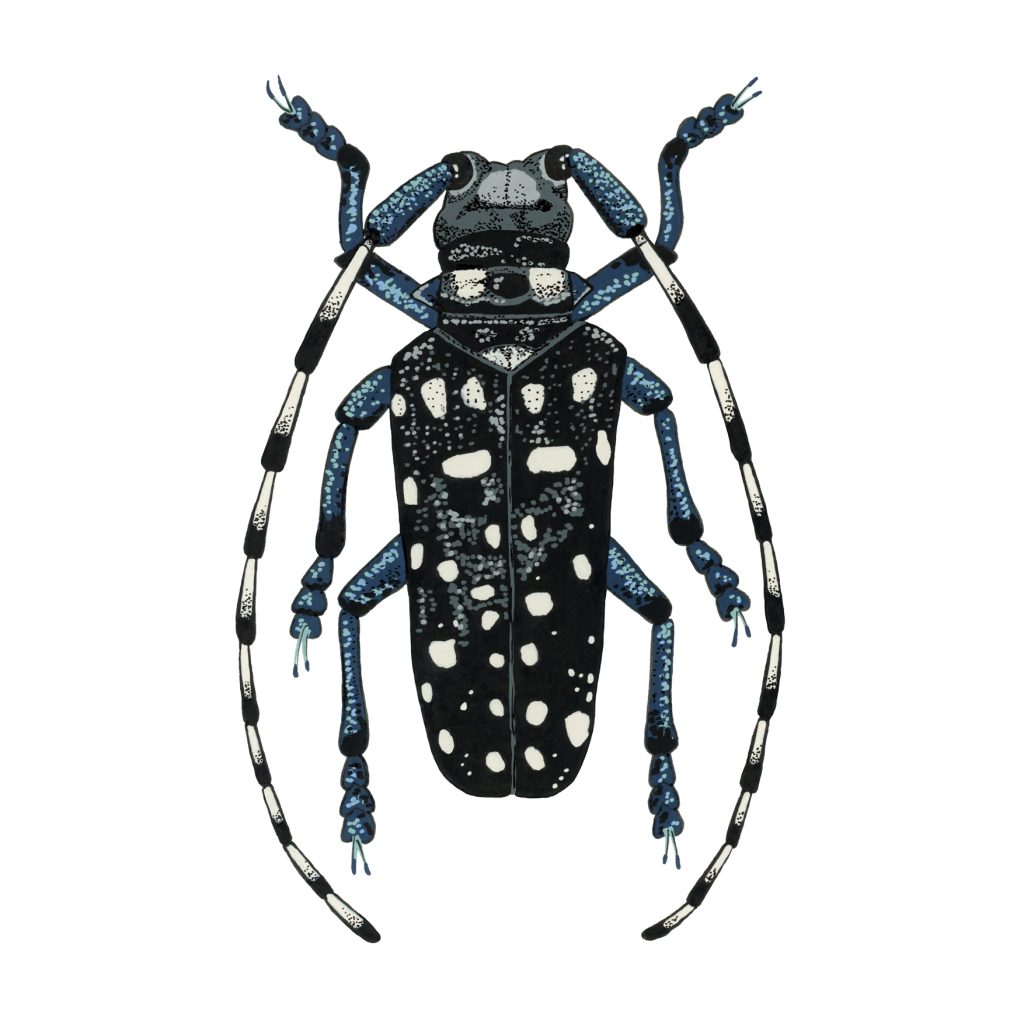
Anoplophora glabripennis
The Asian long-horned beetle is native to Eastern China and Korea, but has accidentally been introduced to North America and parts of Europe via untreated wooden crates. They are highly destructive to woodlands in these non-native countries. They can grow between 17-39mm in length, and their antennae can grow up to 40mm or 1.5-2 times longer than their body. They were first classified in 1853 by Victor Ivanovich Motschulsky.

Melolontha melolontha
The cockchafer, sometimes called the maybug – although it isn’t a bug but a beetle, is native to most parts of Europe. It can grow between 25-30mm in length. They once went on trial in the Avignon during the Middle Ages. They were destroying crops so were told to move area or be outlawed, they didn’t comply and were sentenced to death. They were first classified in 1758 by Carl Linnaeus.
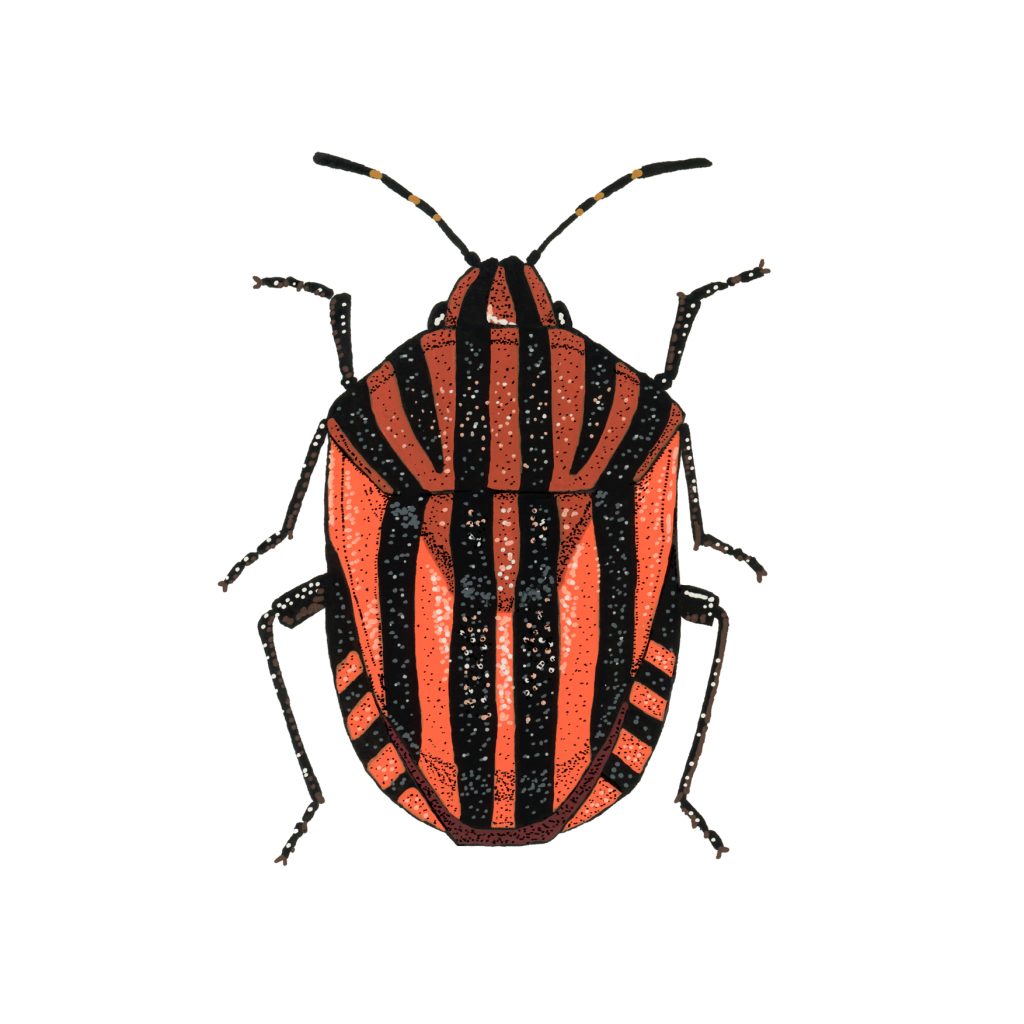
Graphosoma italicum
A striped shield bug, originally only native in the mediterranean, they have travelled northwards and were recently found in sites in London in 2020. They can grow to 8-12mm. The scientific name for shield bugs in Pentatomidae, they name is from the Greek pente meaning ‘five’ and tomos meaning ‘section’, and refers to the five segments of their antennae. They were first classified in 1766 by Otto Friedrich Müller.
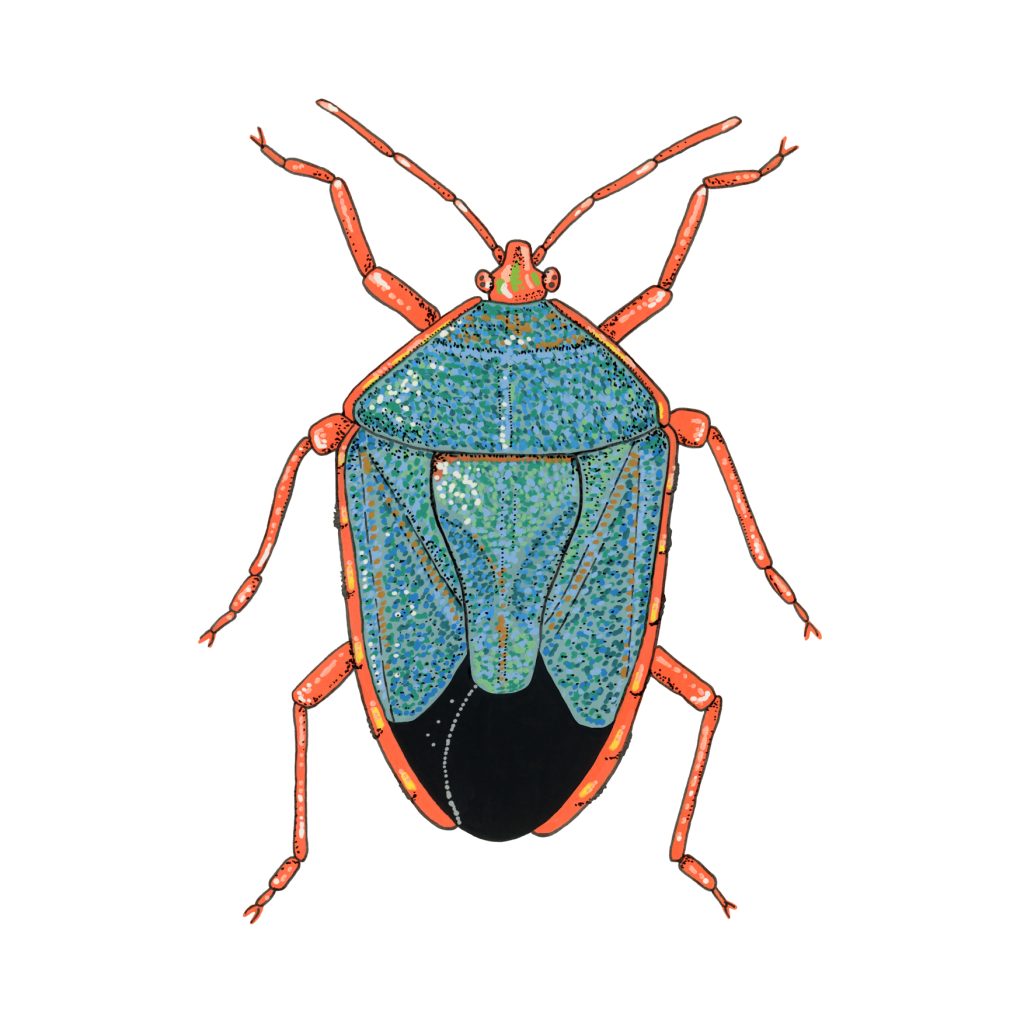
Edessa rufomarginata
The turquoise shield bug can be found in regions of South America. Like other Pentatomidae, they release a pungent defensive spray when they are threatened, disturbed or crushed. For this reason they can sometimes be referred to as ‘stink bugs’. They can grow to 14-20mm in length. They were first classified in 1773 by Charles De Greer.
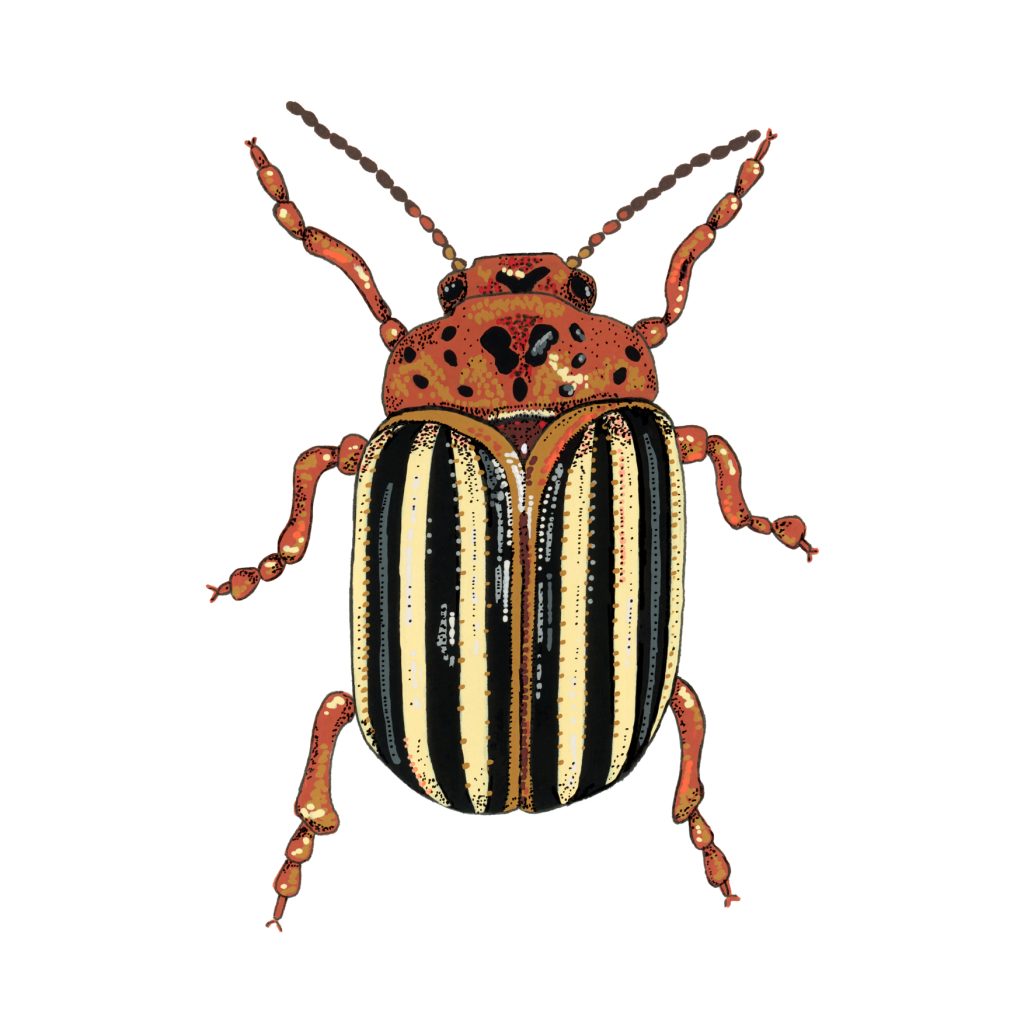
Leptinotarsa decemlineata
The Colorado potato beetle was originally native to the Rocky Mountains in the Americas, but has spread across America and parts of Europe and Asia. Able to throughly destroy potato crops, during the Cold War countries in the Soviet Union bloc believed that the beetles were introduced by the CIA to reduce food security by destroying the USSR’s agriculture. They can grow to between 6-11mm in length. They were first classified in 1864 by Thomas Say.
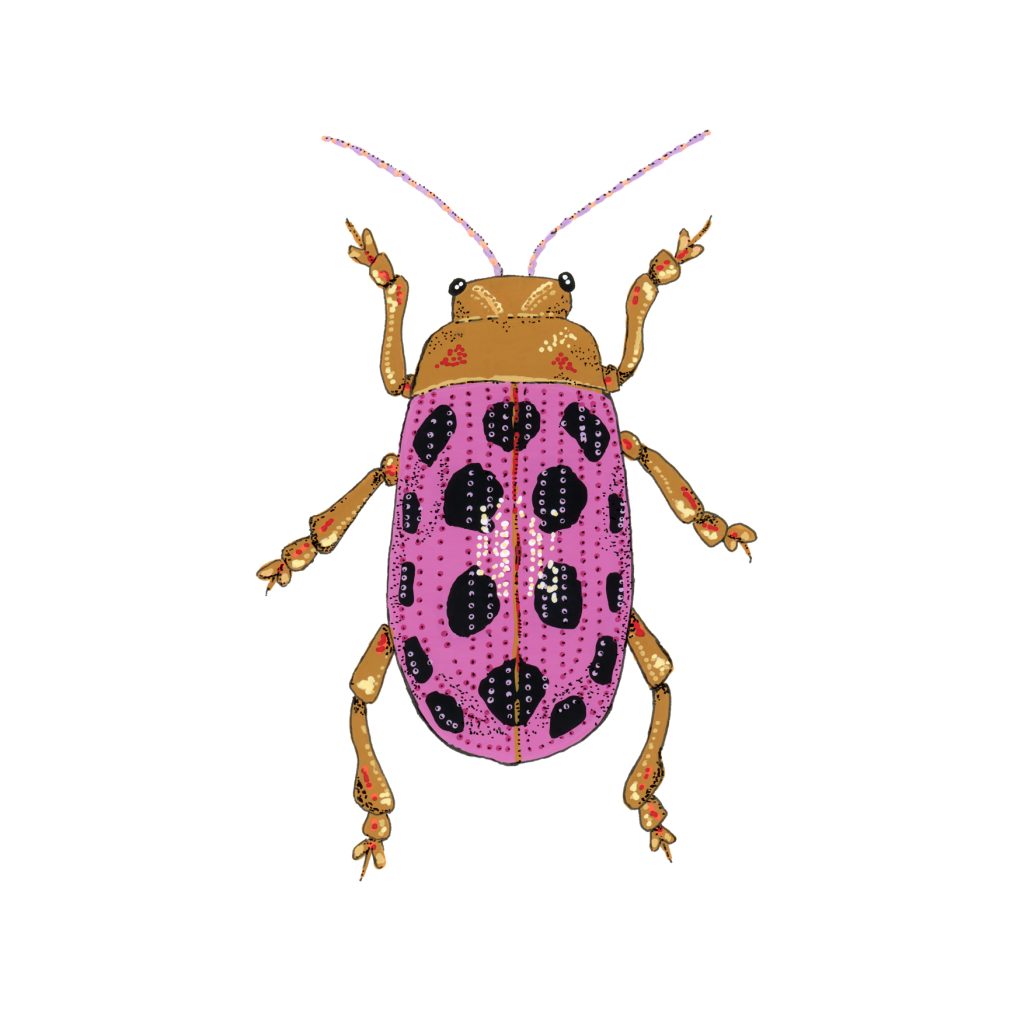
Podontia quatuordecimpunctata
They are some of the largest flea beetles in the world, some of the podontia flea beetles adults can be as large as 20mm. Their natural habit can be found in parts of Southern Asia. Although flea beetles can jump, they are not to be confused with the parasitic flea found living on animals. They were first classified in 1767 by Carl Linnaeus.
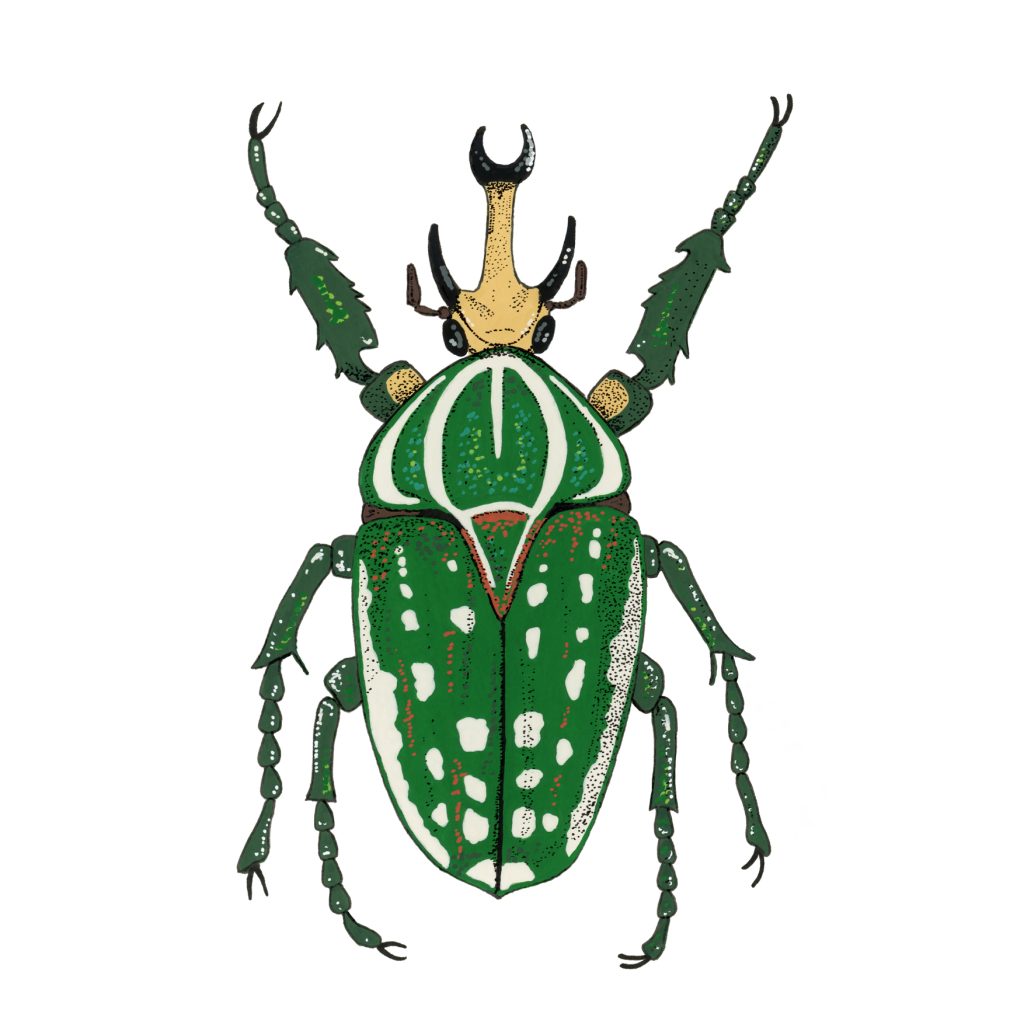
Mecynorhina polyphemus
The giant African fruit beetle, is found in dense tropical African forests. The female can grow to between 35-55mm while the males range from 35-80mm. They are born as tiny white larvae, but when fully grown they can be as thick as your finger. They were first classified in 1781 by Johan Christian Fabricius.
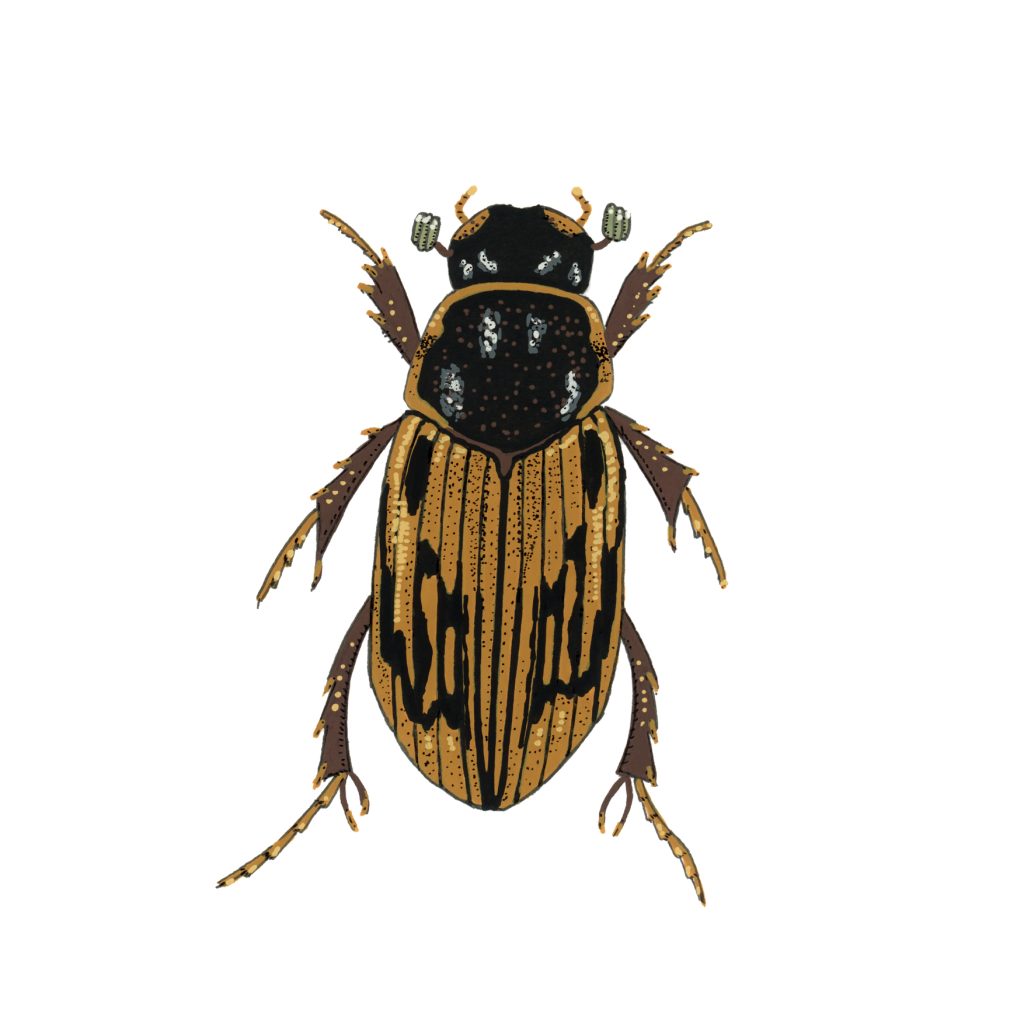
Volinus sticticus
A small dung beetle, measuring around 4.5-5mm. They can be found in most parts of Europe and Turkey. Preferring shade, they can also be found in open pasture where there is plentiful dung. Dung beetles are good for the environment, they provide a wide range of ecosystem services that help to maintain healthy pastures and soils. They were first classified in 1798 by Georg Wolfgang Franz Panzer.
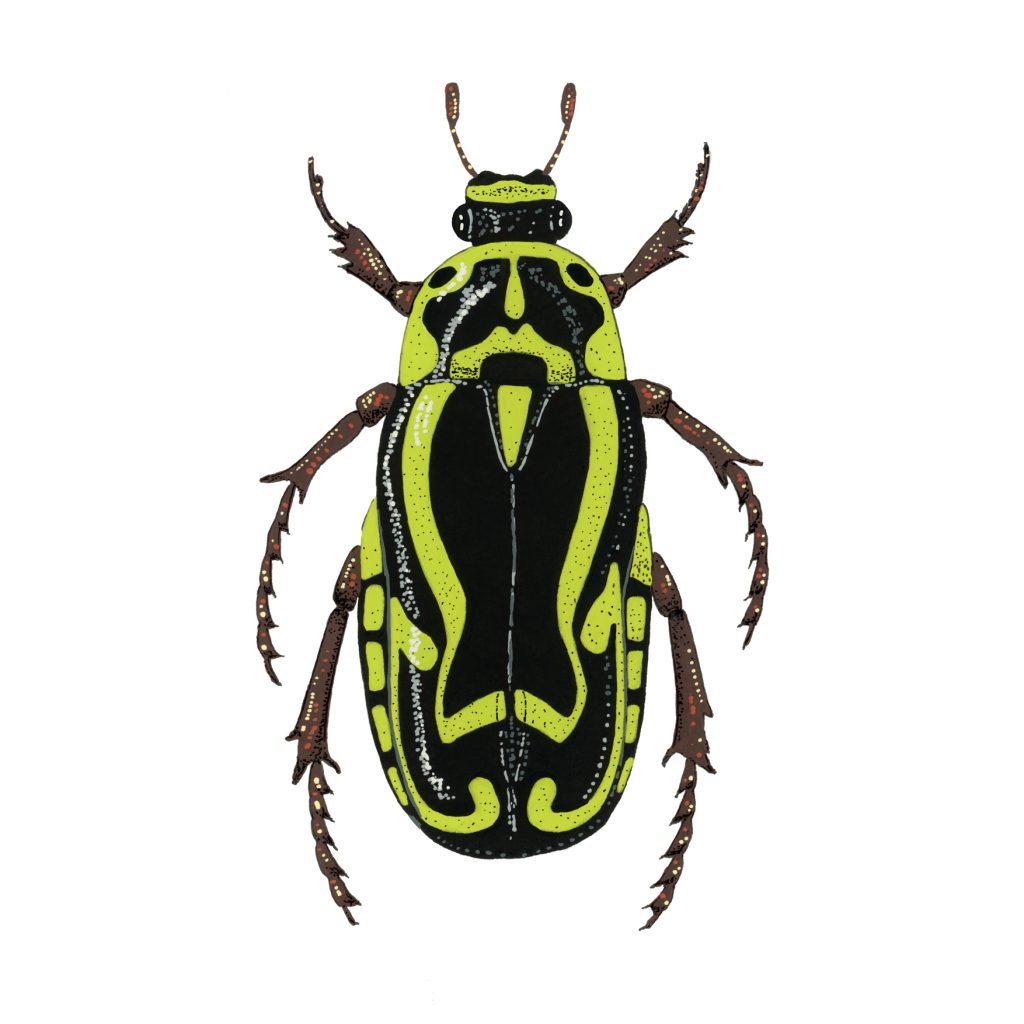
Eupoecila australasiae
More commonly known as a fiddler beetle after the fiddle (violin) pattern on its back, they can be found in Eastern Australia. They are strong flyers and can fly without moving the elytra (hardened forewing). They can grow to 15-20mm in length. They were first classified in 1805 by Edward Donovan.
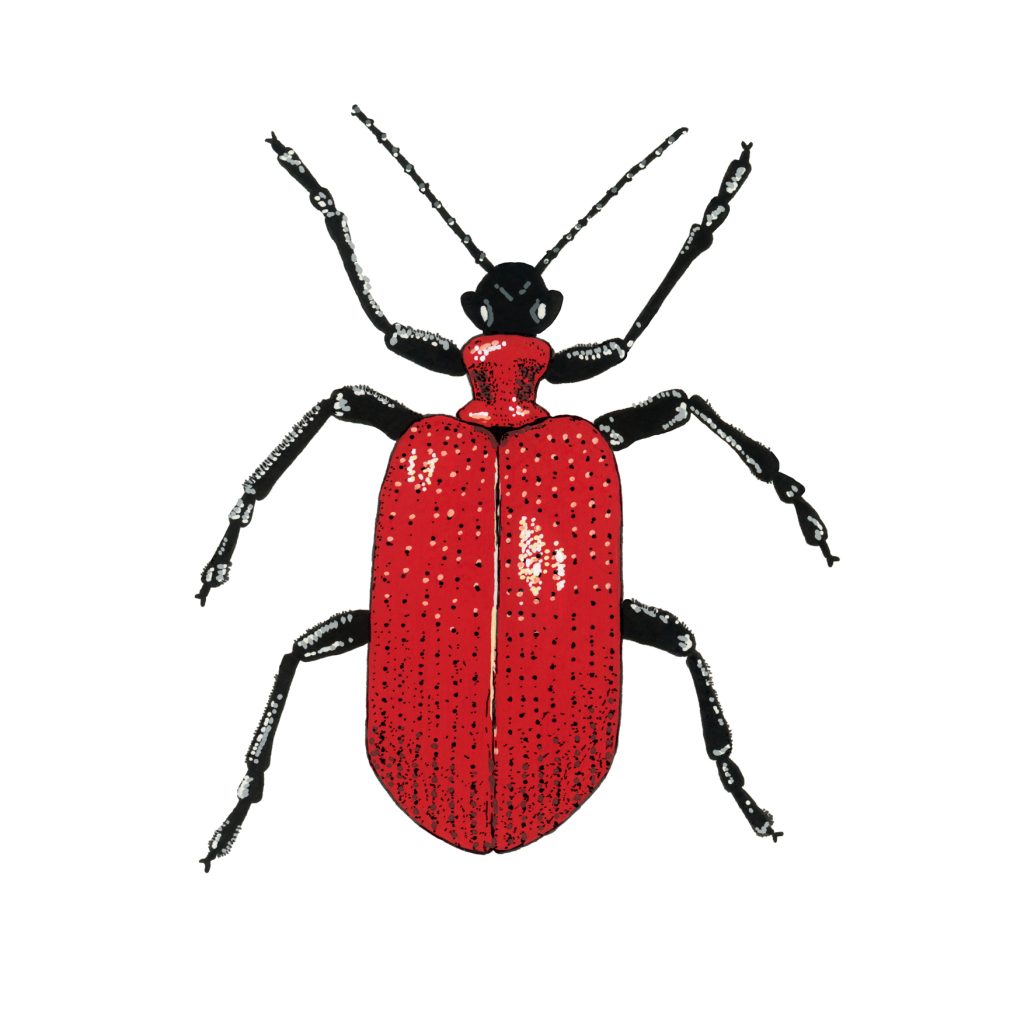
Lilioceris lilii
The scarlet lily beetle is a leaf beetle, was first indigenous to parts of Europe and Asia but can also be found in North America and the UK. If they are unable to escape they can ‘squeak’ by rubbing two body parts together, this sound is known as stridulation. They can grow to 6-9mm in length. They were first classified in 1763 by Giovanni Antonio Scopoli.
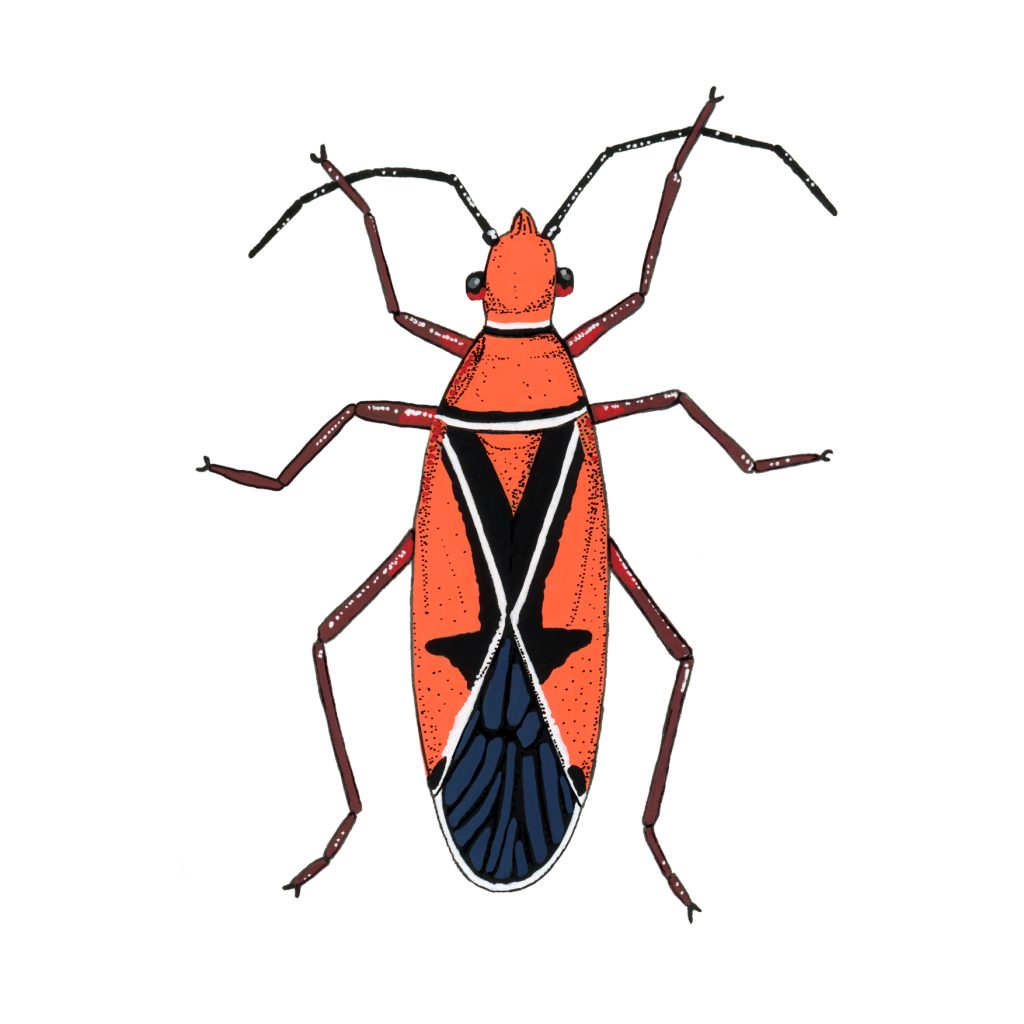
Dysdercus andreae
The St Andrew’s cotton stainer is a true bug, that can be found in North America and the Caribbean islands. They feature a diagonal white ‘St Andrew’s cross’ on the hemelytra. They are a pest to cotton, feeding on the plant and excreting an indelible yellow stain on the lint. They grow to 8-12mm in length. They were first classified in 1758 by Carl Linnaeus.
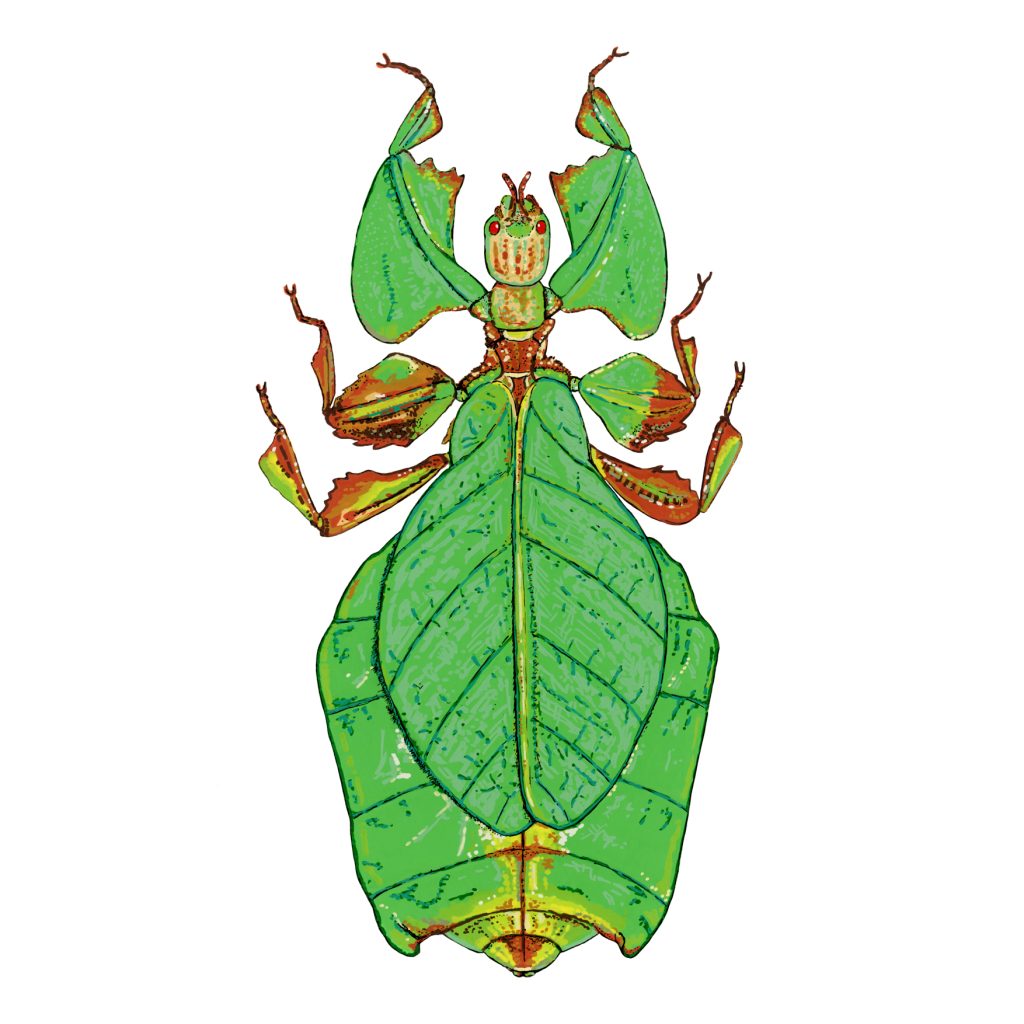
Pulchriphyllium giganteum
The giant Malaysian leaf insect can reach sizes of 10.5cm. Neither a bug nor a beetle, they along with the stick insects are collectively known as the ‘ghost insects’ for the magnificent camouflaging they are able to employ to deter predators, mimicking their surroundings so perfectly. Their scientific classification is the rather splendid Phasmatodea, derived from the ancient greek meaning apparition or phantom. The females have a large elytra and are not able to fly as they lack hind wings, the males are quite different and have a much smaller elytra, and functional non-leaf like hind wings meaning they are able to fly. In captivity, the females don’t require the male to reproduce and do so through parthenogenesis (a form of asexual reproduction). It is still not known how they reproduce in the wild. Because the Pulchriphyllium giganteum is so well hidden, it wasn’t classified until 1984 (by Burghard Hausleithner), and the male wasn’t classified until 1994.
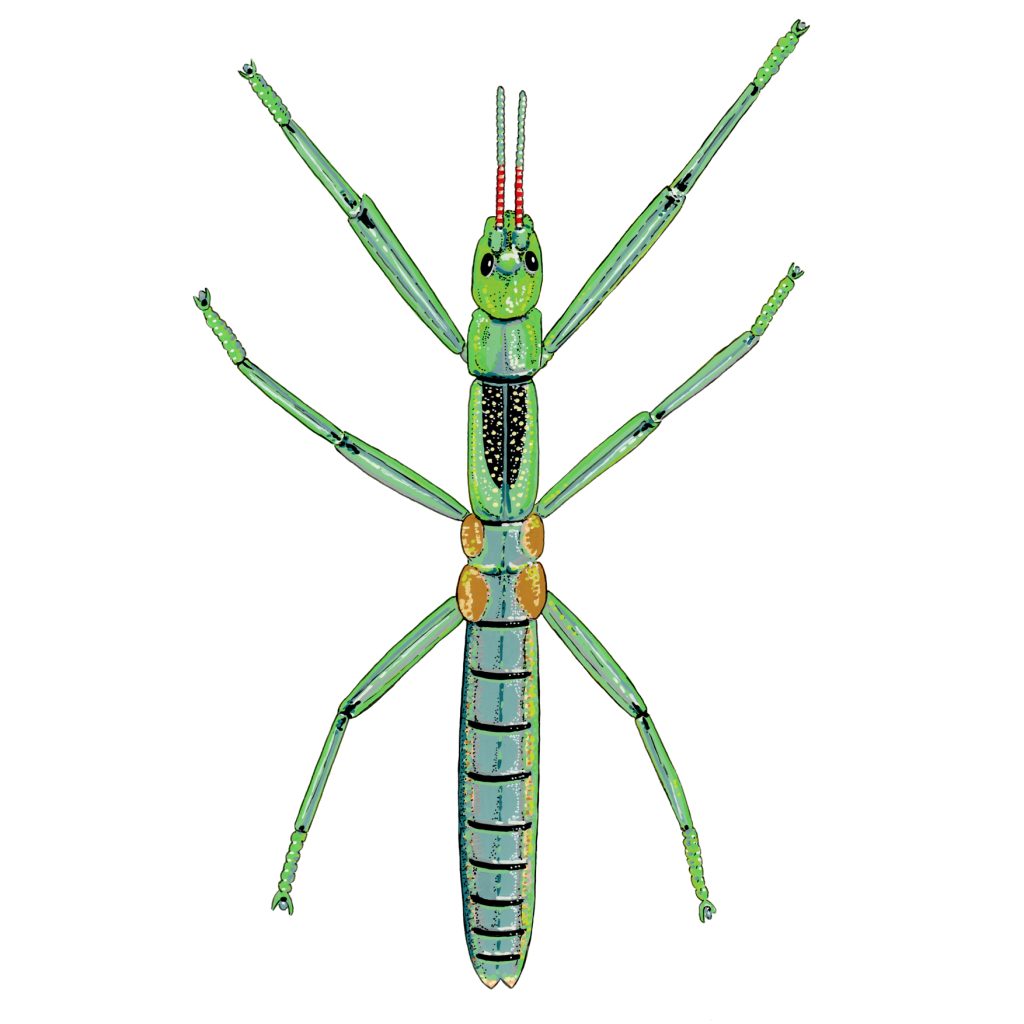
Megacrania batesii
The peppermint stick insect, is an unusual stick insect, as they are one of the few known species that are aposematically coloured (advertising by an animal to a potential predator that it is not worth attacking or eating). In addition to this they have chemical scent glands that also act as a defence, they can spray a noxious aerosol cloud through a membrane pit, in various directions. This irritant has a peppermint odour, hence their common name. The International Union for Conservation of Nature considers them a vulnerable species, they can only be found in very small areas in the Solomon Islands and New Guinea, and in two separate areas in Australia. Their habitat is in the transition between the beach and mesophyll (large leaf) vine rain forests, found feeding on Pandanus. Males are very rare, as the species reproduces mainly through parthenogenesis, although sexual reproduction has been observed. The females are much larger than the males, growing in length up to 137mm, whereas the males can grow up 87mm. They were reclassified in 1865 by William Forsell Kirby.
